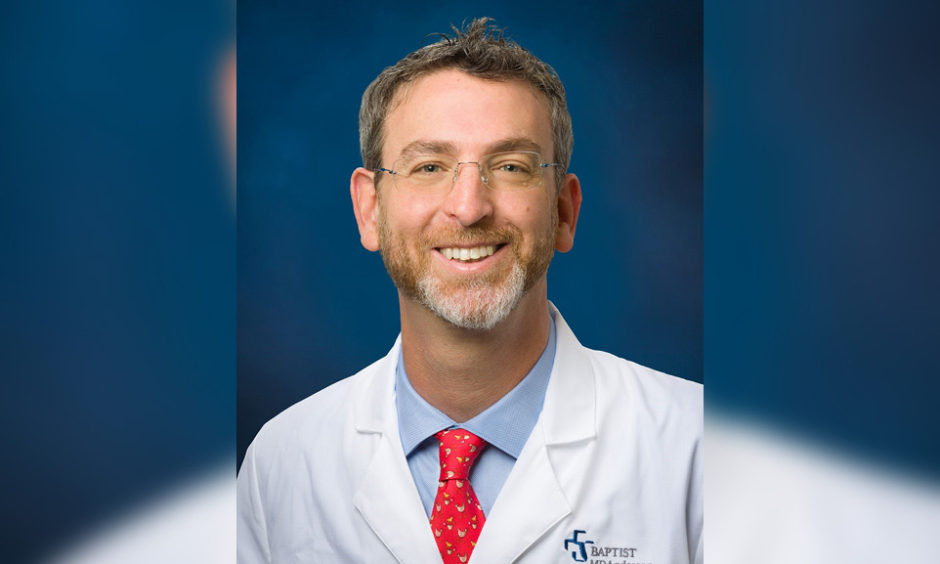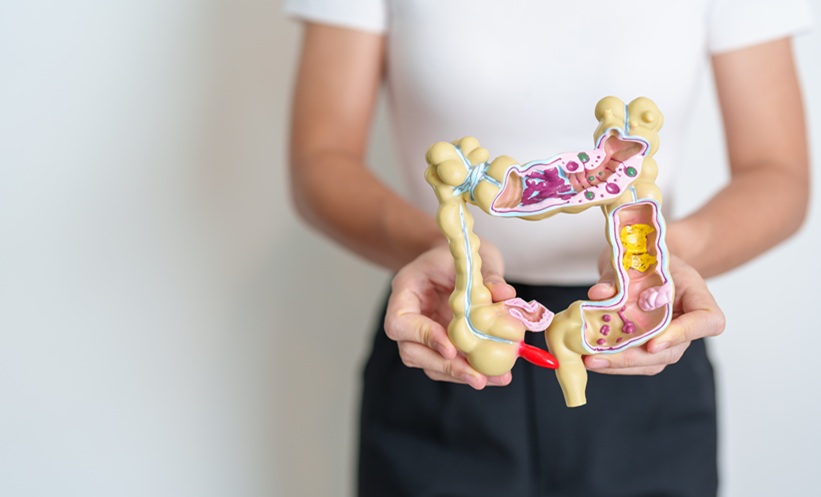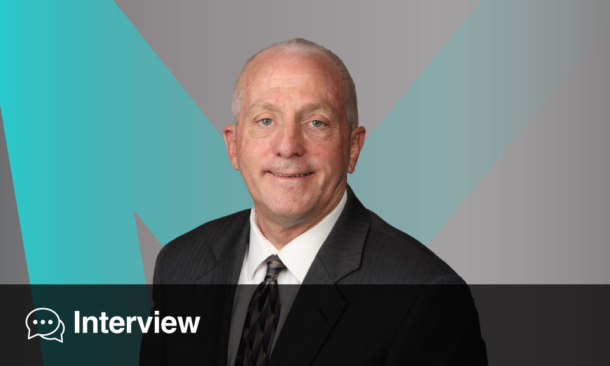Doctor Ron G. Landmann | Executive Council for the US Commission on Cancer National Accreditation Program for Rectal Cancer
Chief of Colorectal Surgery/Surgical Oncology Section at Baptist-MD Anderson Cancer Center
![]()
How has computer-aided digital and robotics surgery transformed your practice over the years and how has it transformed the field of colorectal disease as a whole?
I think we’re still extraordinarily early in the journey of computer-aided and robotics surgery. I do a lot of robotic surgery: in fact, 90% of my practice is ‘robotic’ colorectal surgery, but I wouldn’t really call it robotic. The only thing the robot does is translate my motion at a console into other motions at the bedside. Granted, there are key features of the robot that are useful in terms of visualisation, articulation, and instrumentation, but that’s not the robotic part. In reality, these are just terminals and almost a means to an end. We don’t really have digital surgery in the way that we think of it, at least in regard to augmented reality, improved visualisation, and enhanced diagnostics in real or clinical practice. I think although there have been trials, there are a lot of companies with invested interest which are trying to get input from surgeons and are excited to see how it can work in order for us to augment it. We are pretty close, but still a little far away. I think that the next key focus is going to encompass improved visualisation: not just regular three-dimensional white light, but targeted visualisation and definition of anatomy and planes based on molecular tags. We can then be using, for example, fluorescence imaging in combination with other preoperative imaging techniques, such as CT or MRI.
What are some of the problems or barriers that can really prevent something like augmented reality being adopted into the clinic?
I think the biggest barrier is going to be cost, access, and availability, especially to begin with. The cost of the robot can be prohibitive for many American medical centres. The biggest issue is getting the cost to be within reason because the hospital doesn’t get paid any extra to do these procedures using robotic assistance or augmented reality. The more cost-effective you can do it, the better. And if it doesn’t really add true benefit to the hospital, especially with reimbursement now going down, the hospital CEO or Chief Financial Officer may say: “You’ve got great outcomes; where is the true benefit for the hospital and for the patient for this additional cost?” That’s going to be the critical thing; as it is now, we are paying extra amounts of millions of dollars for these devices and even more add-ons.
You recently co-authored a paper on the conversion from minimally invasive to open sigmoidectomy for diverticular disease. What was the take-home message?
The aim of this study was to try and view why people were converting from laparoscopic or robotic surgery to open, whether there was any difference, and also why in some cases open surgery is being used for a standard benign disease from the get-go, which we know should be done in a more minimally invasive procedure. If it’s not a cancer, why aren’t you giving the patients the benefit of a more minimally invasive procedure for a benign disease? The goal was to evaluate and look at surgeons and institutions with lower and higher volumes of patients and see the compelling reason for conversion. We found that when using robotics, patients had lower conversion rates for benign, yet otherwise complex surgical procedures. That’s why we’re trying to push for the more minimally invasive procedure, and perhaps the robotic approach will be easier than the laparoscopic approach
to implement.
You touched on that aspect of minimal-invasiveness and preservation. Do you think that sort of patient-centric consideration has always been prioritised in the field?
I really think so. There have been times when we swayed a little bit away from this, before realising that patients don’t care about size of the incision and whether you do a single site or not: they do care, however, about immediate function postoperatively and in the long term. If we can improve the postoperative function and quality of life, both in the immediate period of the following 30–60 days and obviously the long term, that’s huge. Minimally invasive surgery over open surgery can get patients back to work sooner. They can be active participants in their lives, both with family and at work, with less pain and fewer narcotics. I tell patients: “I’m going to do this robotically, it’s minimally invasive, and all you will be left with is a couple of little scars that eventually fade.” Sometimes they reply saying they don’t care, which is an okay response in theory, however it is important to emphasise in the case of cancer that this can actually be cured. I often reply to these patients saying: “We’re going to cure the cancer for you, and once all is said and done, you’re going to have a reminder one way or another. The smaller the reminder the better because that means you can continue to live your life outside the shadow of your cancer.” Body image is clearly important, as people don’t want that constant reminder every time they get out of the shower, or in the morning when they’re getting dressed, to see those scars. They want to live their lives. Nobody really needs a constant reminder of what they went through, so let’s change this.
You serve on both the National Accreditation Program for Rectal Cancer and the American Society of Colon and Rectal Surgeons (ASCRS) Rectal Cancer Coordinating Committee. Are there any unique challenges in the USA towards overseeing accreditation programmes and setting guidelines and parameters, perhaps compared to other countries you are aware of?
In the UK or other parts of Europe where they have a national health system, patients are almost ‘prescribed’ where to go, for instance in patients with rectal cancer. We don’t have that in the USA. The USA guiding and starting principles were of freedom and liberty, meaning we experience unique challenges in physicians or clinicians feeling infringed upon when told that they should be treating their patients differently to how they want. What we have to do is try to educate physicians, surgeons, hospitals, health systems, and eventually the payers to emphasise that these are often not simple disease processes. This is a complex process, and if you dedicate yourself to this treatment of increasing volume, you have better outcomes in both the short and long term. We can’t compel people to only go to the major academic medical centres: we don‘t have that ability to do that. We need the processes and the accreditation to be nearly universal, whether you’re a small community hospital with one surgeon or a major medical centre with 12 surgeons treating rectal cancer. If the same regulations and standards apply, we should all get the same response. The end goal of this process is that no matter where you go in the country, you get the same operation or treatment, whether it’s chemotherapy, radiation, or combination surgery, with the same outcomes.
You’ve spoken before about an approach to patient care versus empowerment and personalisation. How do you adopt that ethos in your day-to-day practice? How do you empower your patients?
This is perhaps the easiest thing and what I enjoy the most, second to actually operating. Engagement of the patient and their family in their management goes a long way because that really builds up the patient–physician relationship. My goal when I see the patient for the first time is not just to say: “You have ‘x’, and this is the treatment.” Engagement really involves educating the patient as to what is going on, why we’re doing what we want to do, and what the long-term outcomes are going to be.
I focus more on long-term outcomes, prognosis, and quality of life than I do on the episode of care. Ideally, the episode of care, either for a simple benign disease process such as haemorrhoids or diverticulitis, or a complex lethal cancer, should be a finite period in those patients’ time. What the patient really cares about is how it’s going to affect them in the long term, if they’re going to be able to work day-to-day, if they’re going continue being able to go out with a spouse for dinner, and to see their kids grow up and graduate: that’s what they care about. They care about the cancer, but also about the impediments they are going to experience socially, professionally, and also sexually. I address all those features, because sometimes people are very afraid of that. If you just come out and openly talk to them about all those issues it shows patients that you’re engaged.
Finally, what was the most valuable aspect that you took home from this year’s International Colorectal Disease Symposium?
I started attending this conference in 2007. The reason I had started attending was because I was told by one of my mentors, who has since passed away, that this is perhaps one of the leading conferences, more so than our national societies even. We get to learn about new innovations, techniques, and management before it comes out and diffuses to the established societies. I think the integration, collaboration, and the collegiality is fantastic. It is infectious. That is perhaps the best part of this meeting: you can meet and talk to other colleagues, perhaps not even physicians, to exchange ideas. And that’s the key thing. The only way we can improve medicine and improve humankind is through communication. The answer to everything is always communication. So I do believe that the communication and exchange of ideas that lead to further innovation and further improvements is the best thing about this meeting.








